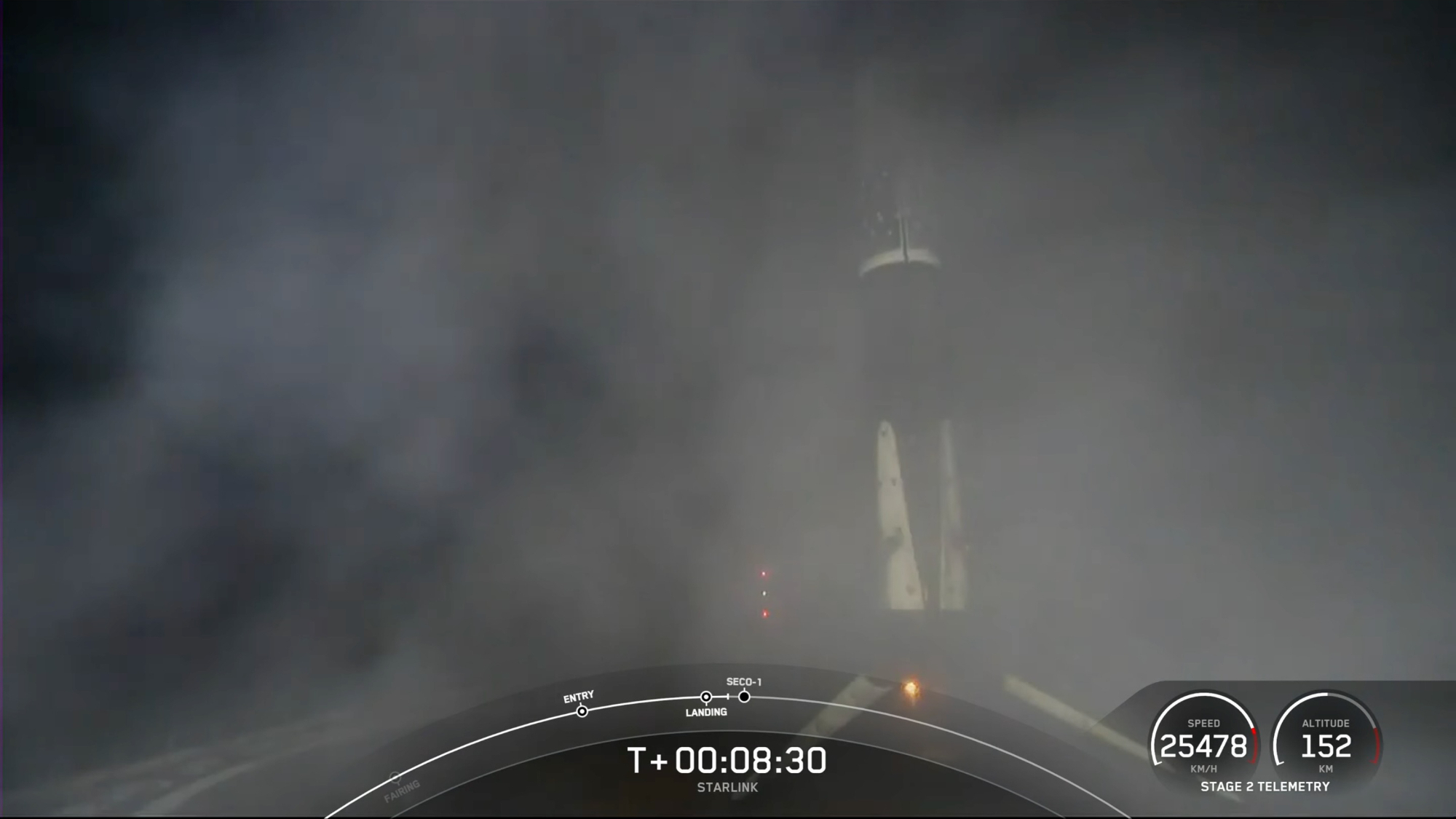SpaceX launched 22 of its Starlink internet satellites toward orbit tonight (Aug. 31) and brought the rocket back for a landing at sea.
A Falcon 9 rocket carrying the Starlink spacecraft lifted off from Florida's Cape Canaveral Space Force Station tonight at 10:21 p.m. EDT (0221 GMT on Sept. 1).
The Falcon 9's first stage came back to Earth as planned, touching down about 8.5 minutes after liftoff on the SpaceX drone ship A Shortfall of Gravitas, which was stationed in the Atlantic Ocean.
Related: Starlink satellite train: How to see and track it in the night sky

It was the seventh launch and landing for this particular booster, according to a SpaceX mission description. The company reuse record, by the way, is 16 flights, held by two different Falcon 9 first stages.
The Falcon 9's upper stage kept on flying tonight. If all goes according to plan, it will deploy the 22 Starlink satellites into low Earth orbit (LEO) about 65 minutes after liftoff.
Tonight's Starlink launch was supposed to be the second half of a SpaceX doubleheader: Another Falcon 9 was scheduled to launch 13 satellites for the U.S. Space Force from Cape Canaveral this morning.
Get the Space.com Newsletter
Breaking space news, the latest updates on rocket launches, skywatching events and more!
SpaceX scrubbed that planned launch, however, due to an undisclosed issue. The company is now targeting Friday (Sept. 1) at 11:26 a.m. EDT (1526 GMT) for the Space Force liftoff. You can watch it here at Space.com when the time comes.
Editor's note: This story was updated at 10:48 p.m. EDT on Aug. 31 with news of successful launch and rocket landing.
Join our Space Forums to keep talking space on the latest missions, night sky and more! And if you have a news tip, correction or comment, let us know at: community@space.com.

Michael Wall is a Senior Space Writer with Space.com and joined the team in 2010. He primarily covers exoplanets, spaceflight and military space, but has been known to dabble in the space art beat. His book about the search for alien life, "Out There," was published on Nov. 13, 2018. Before becoming a science writer, Michael worked as a herpetologist and wildlife biologist. He has a Ph.D. in evolutionary biology from the University of Sydney, Australia, a bachelor's degree from the University of Arizona, and a graduate certificate in science writing from the University of California, Santa Cruz. To find out what his latest project is, you can follow Michael on Twitter.









